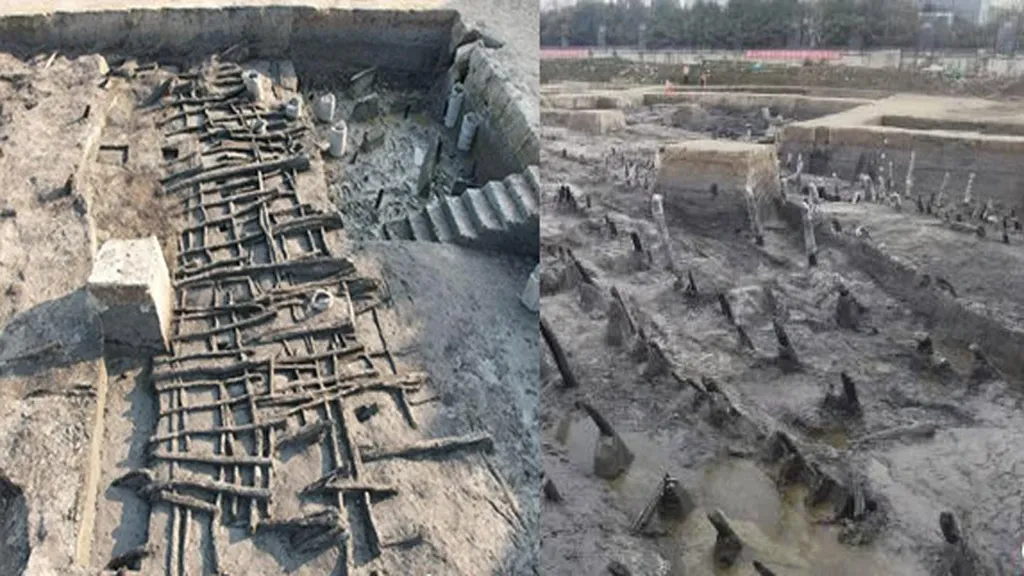In the quiet corners of history, ancient timber structures stand as testaments to architectural ingenuity, their wooden beams and joints whispering tales of resilience. Yet, as time marches on, these structures face an insidious foe: long-term corrosion. A recent study published in *Advances in Civil Engineering* (translated from Chinese as “Advances in Civil Engineering”) by Honglou Yang of the Department of Architectural and Civil Engineering, has shed new light on how this corrosion impacts the seismic performance of these ancient wooden wonders, with implications that ripple through the construction and energy sectors.
Yang’s research, which employed the OpenSees finite element software, created a simplified model of an intact ancient wooden structure, factoring in column rocking, mortise–tenon joints, Dougong joints, and the role of plates. The model’s accuracy was verified through shaking table tests, with results showing a peak displacement error within a mere 10%, indicating a high degree of precision.
The study’s findings are particularly noteworthy for the energy sector, where historical structures often house critical infrastructure. “When the performance degradation rate of the Dougong joints is less than 15.8%, the peak displacement increase rate of the structure is less than 5%,” Yang explained. However, the story takes a dramatic turn when it comes to mortise–tenon joints. “When the performance degradation rate of the mortise–tenon joints is 5.7%, the peak displacement increase rate of the structure is greater than 16.32%,” Yang revealed.
This research underscores the critical role of mortise–tenon joints in the structural integrity of ancient timber buildings, especially under seismic stress. The study found that the performance degradation of these joints significantly impacts the structure’s response to minor earthquakes, increasing the probability of slight and moderate damage. However, under major earthquakes, the impact is less pronounced, with only a slight increase in the probability of severe damage and collapse.
The implications for the energy sector are profound. As historical structures are increasingly repurposed to house modern infrastructure, understanding and mitigating the effects of long-term corrosion on seismic performance becomes paramount. This research could shape future developments in retrofitting and preservation techniques, ensuring that these ancient structures continue to serve as robust platforms for contemporary needs.
Yang’s work, published in *Advances in Civil Engineering*, not only enhances our understanding of ancient timber structures but also paves the way for innovative solutions in construction and energy sectors. As we strive to blend the old with the new, such research becomes a beacon of insight, guiding us towards a future where history and modernity coexist harmoniously.

